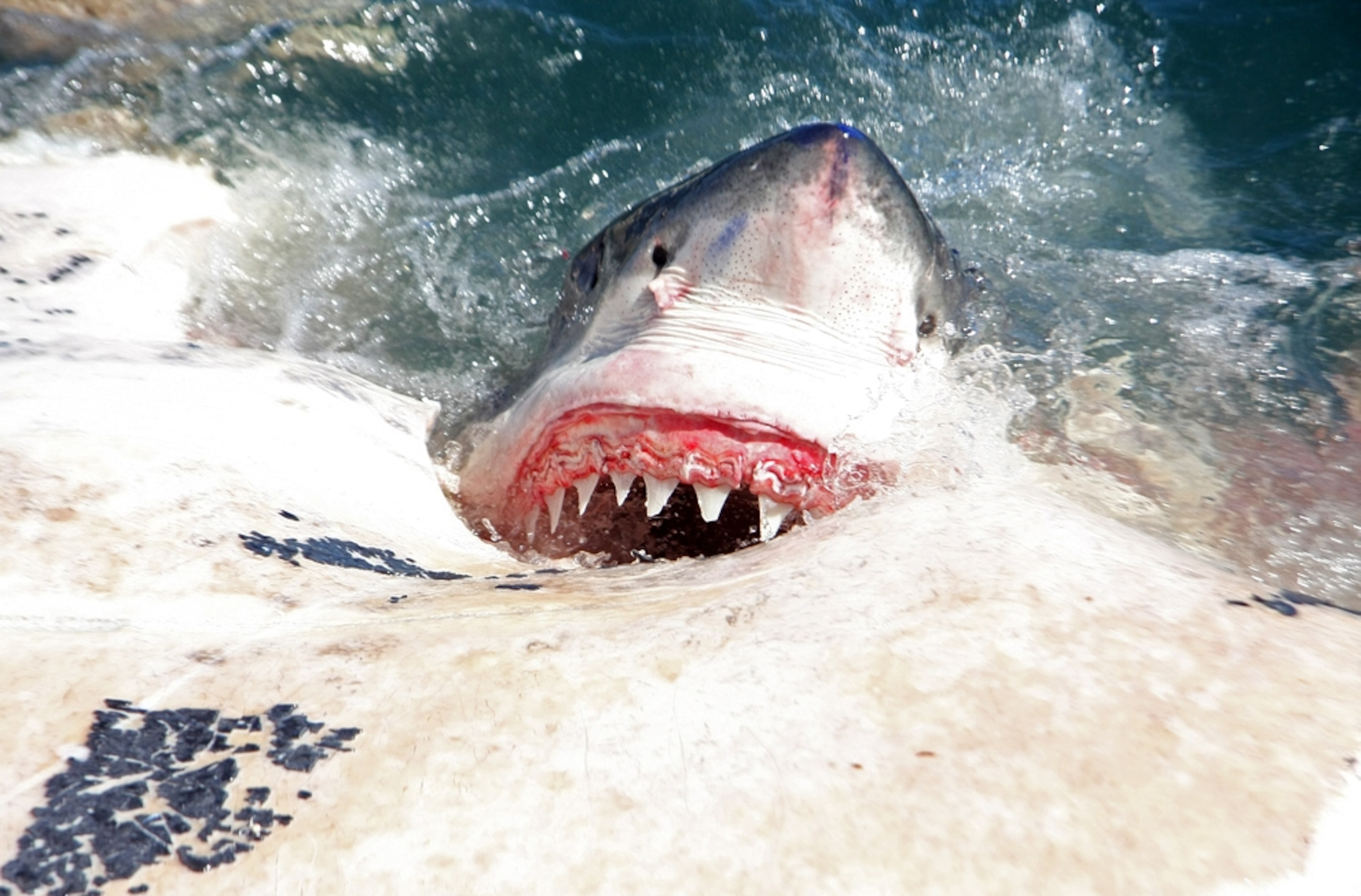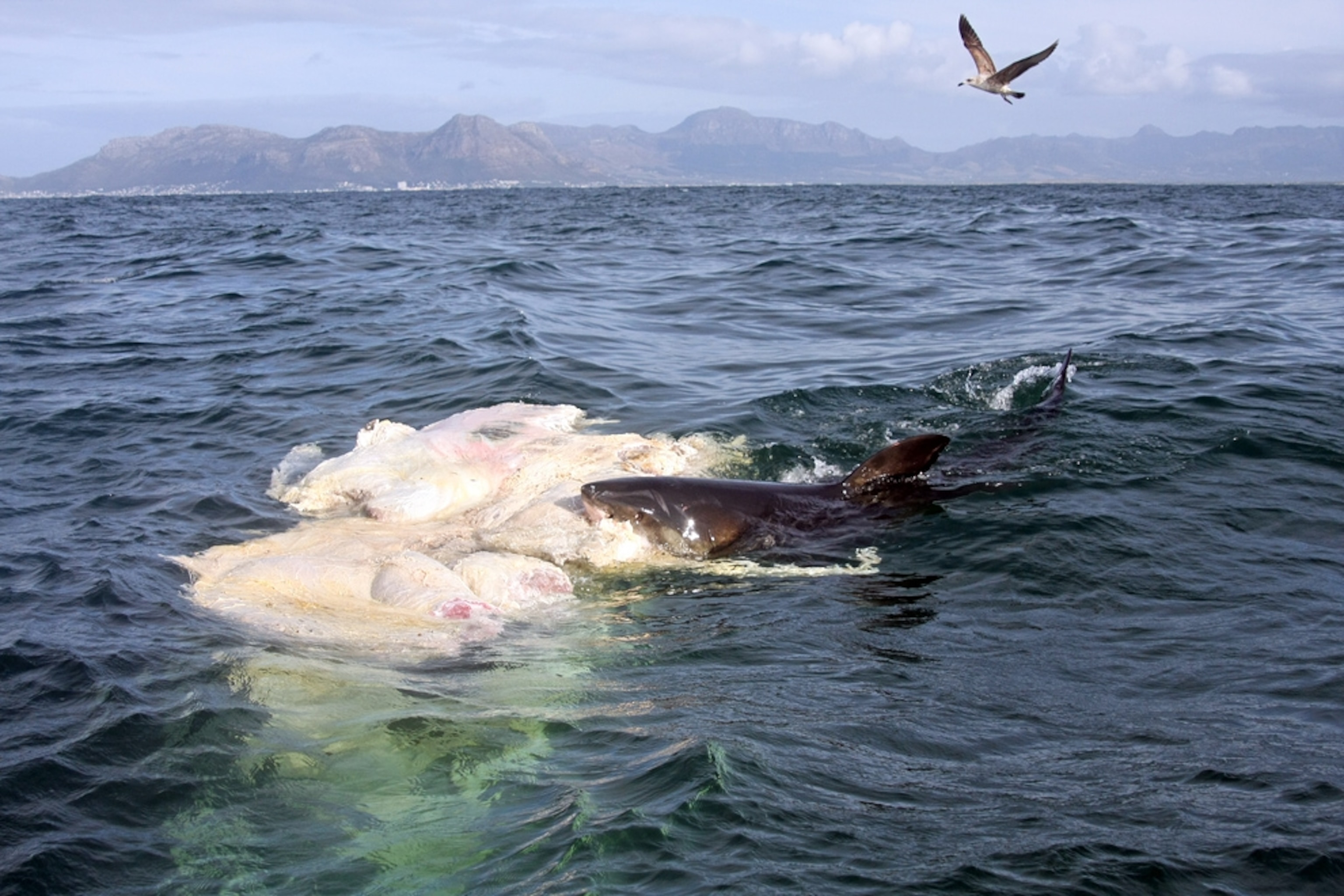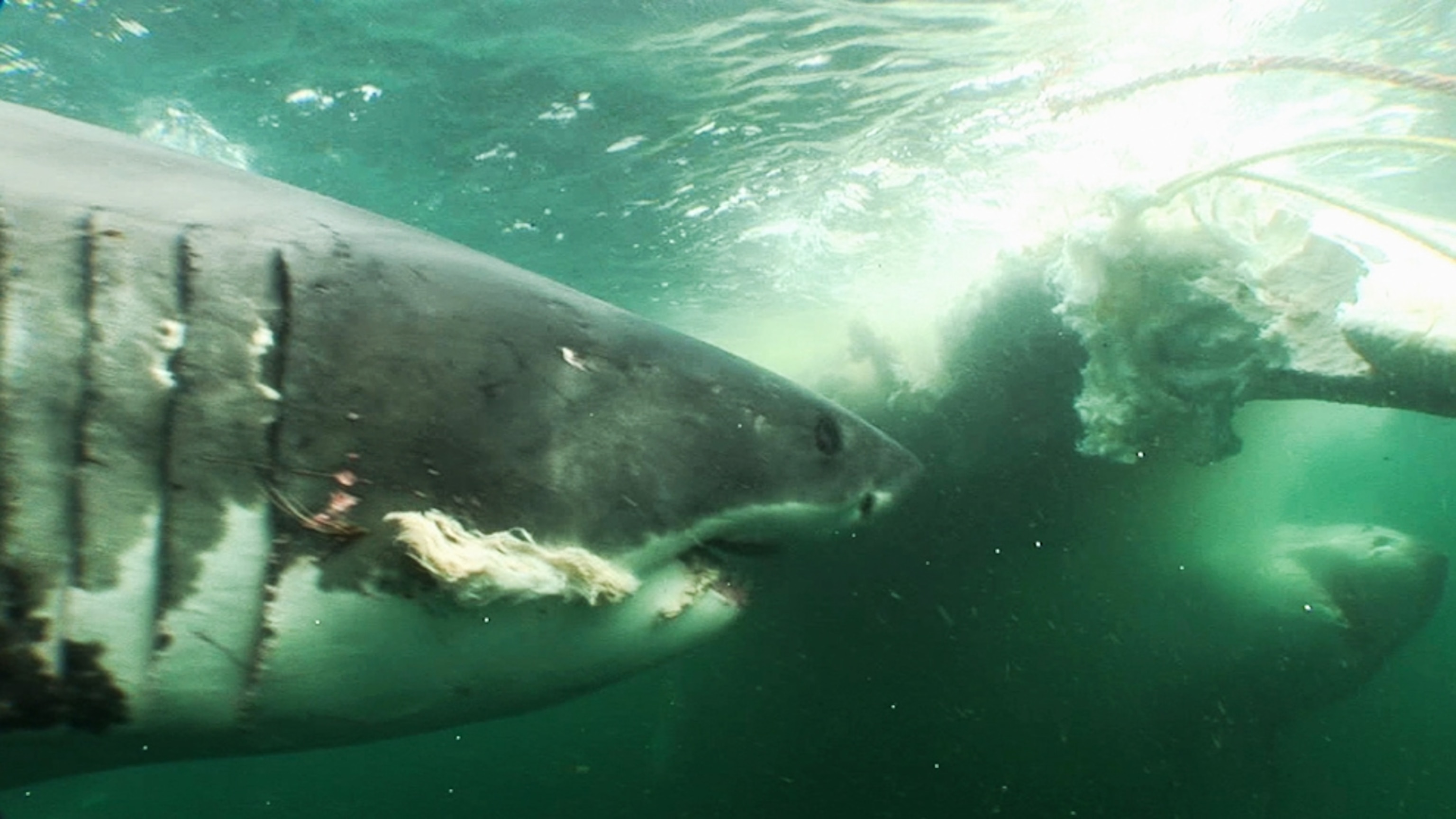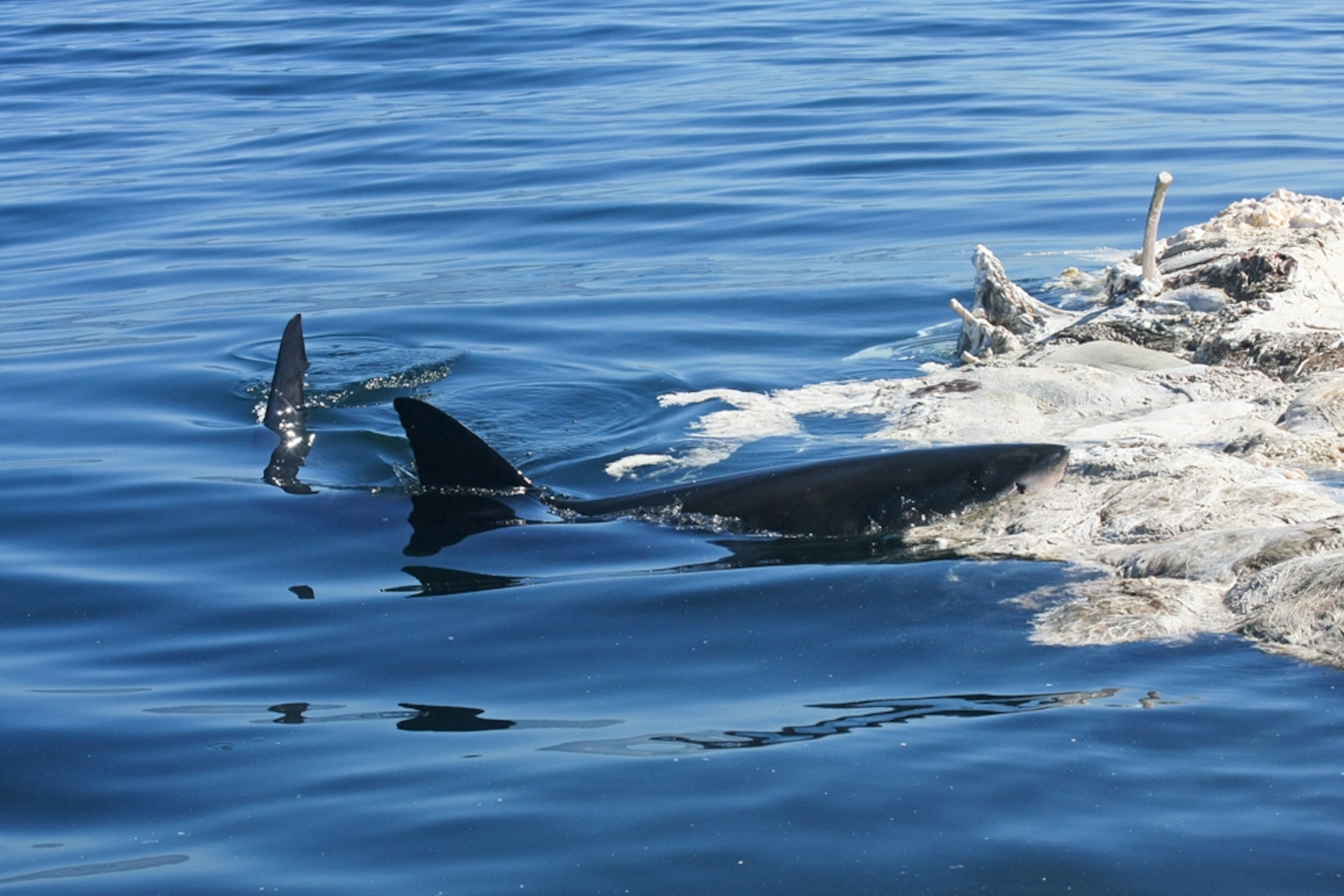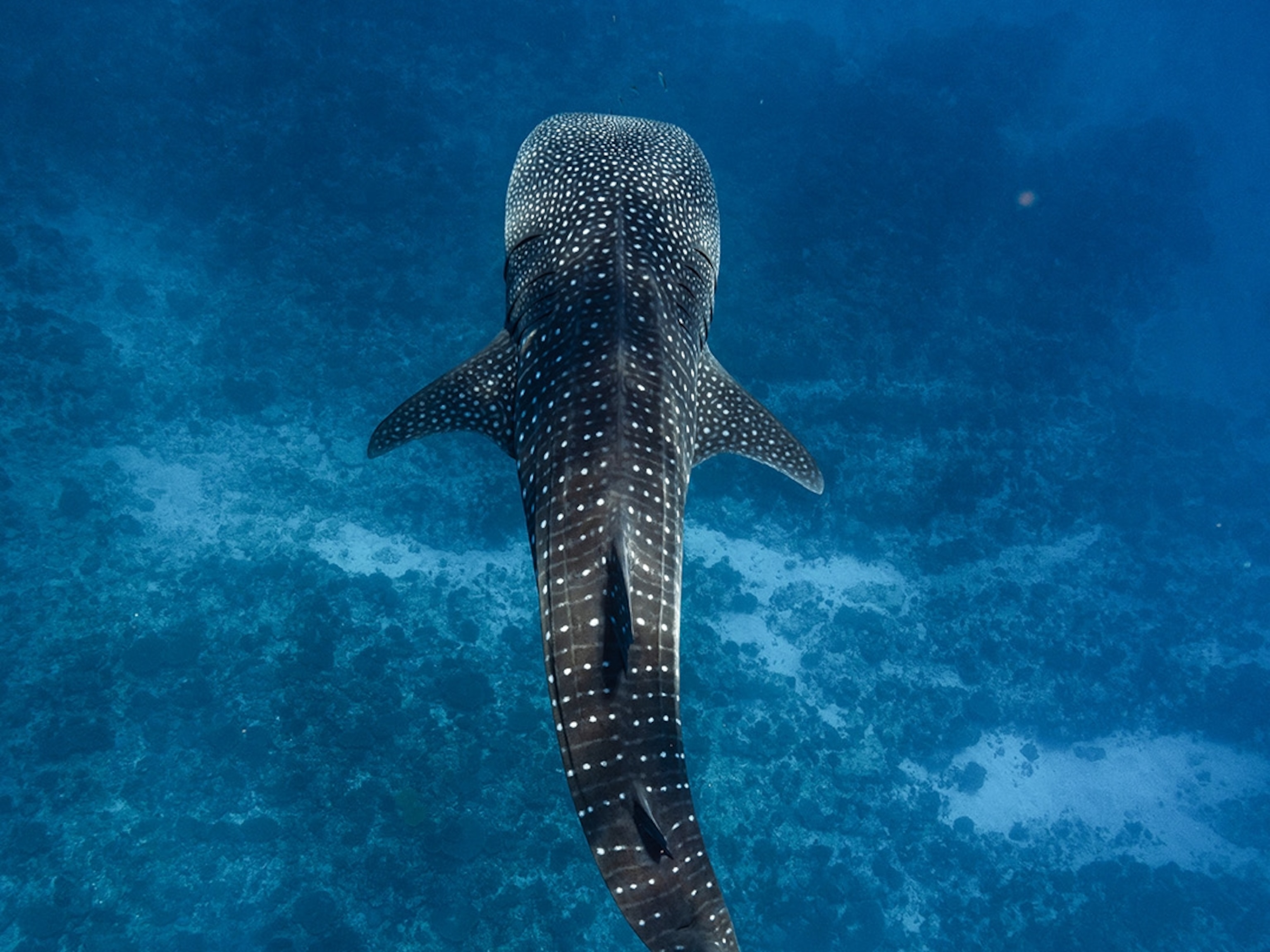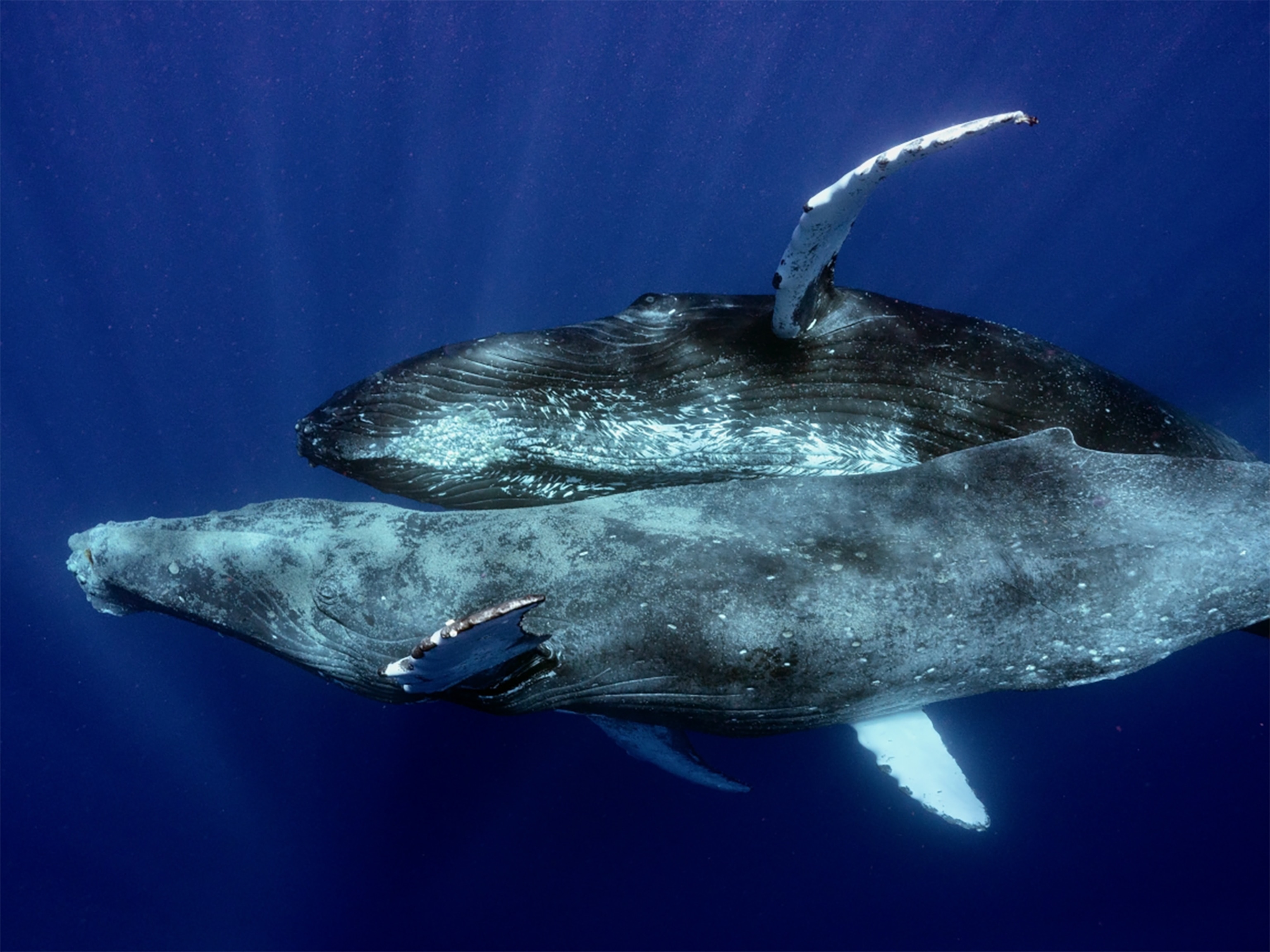Photograph from Barcroft/Fame Pictures
Photos: Great Whites "Take Turns" Feeding on Dead Whale
A veritable swarm of great whites tucked into a whale carcass in South African waters earlier this month—and kept their table manners, says a scientist who witnessed the rare event.
October 6, 2010
